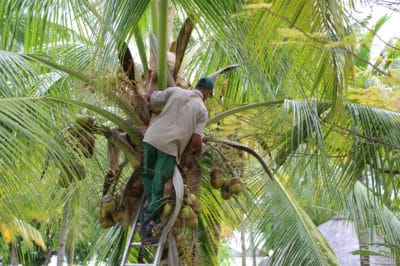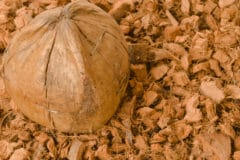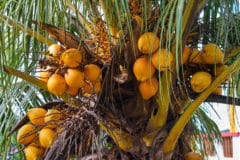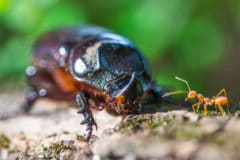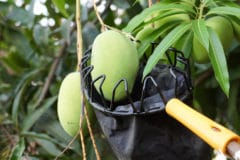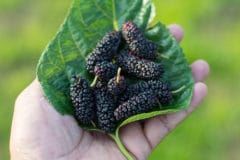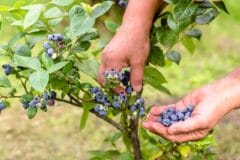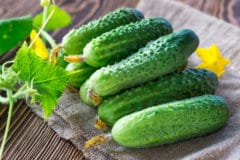Stages of Coconut Development
The stages a coconut goes through before it’s ripe and ready for harvesting can take quite a bit of time. In fact, it takes approximately one year for a coconut to reach the stage of ripeness where it’s ready for picking. The coconut palm must reach a certain age before it produces flowers, which eventually turn into coconuts. A quick rundown of these stages are listed below:
- Coconut palms are four to six years-old before they produce flowers, which eventually turn into coconuts.
- Male and female flowers are produced on the same branchlets, with males located at the ends and females located more at the base.
- Once pollination and germination occurs, the female flowers develop into small, green nut-like seeds, or fruits, that take approximately one year to become ripe.
- Coconut palms reach their full production age after 15 to 20 years and can continue producing coconuts for around 80 years.
- A single coconut palm in its prime can produce anywhere from 50 to 200 fruits annually.
Harvesting the Coconuts
With coconut palms growing around 60 feet tall at maturity, it will take some tools to get them off the tree, if some haven’t already fallen to the ground around its base. If you notice any coconuts on the ground, pick them up and shake them and if you hear the milk inside, they are ripe and ready for use.
How Not to Harvest the Coconuts
One thing you don’t want to consider doing is climbing up the trunk of the tree wearing tree-climbing spikes on the bottom of your shoes. This may seem tempting, especially if you’ve watched T.V. shows seeing people climbing the tall trunks, but the spikes will permanently damage the trunk. The tree is then susceptible to diseases like Thielaviopsis trunk rot and can die.
Correct Way to Harvest Coconuts
The easiest and safest way to get the coconuts down from the top of the tree is with a pole saw. If you are lucky enough to own a gas-powered pole saw, it makes the job of cutting the coconuts from the branchlets quick work. However, even one you have to use manually works well in getting the coconuts down. Just be careful they don’t fall on your head when they drop to the ground.
If you don’t have a pole saw and decide to use a ladder and climb to the top of the tree to cut the coconuts down, be sure to have someone help hold the ladder so you don’t fall. Make sure the ladder is on a level surface and is snug against the tree before you start climbing. You can use a handsaw or sharp knife to cut the coconuts.
Fruits of Your Labor
Once you have your coconuts picked and the thick outer husk removed, you can now open the nut to get to the meat. If you use a sharp object to drill through the three eyes, you can release the inner milk before opening the entire nut. You can now enjoy the milk and the meat in all your favorite recipes or drinks.
